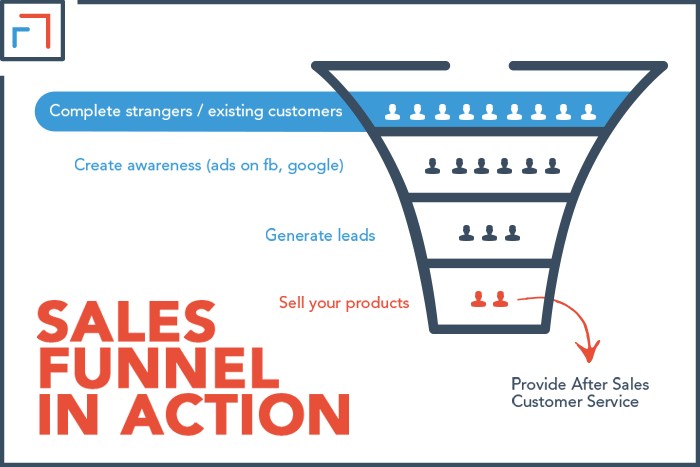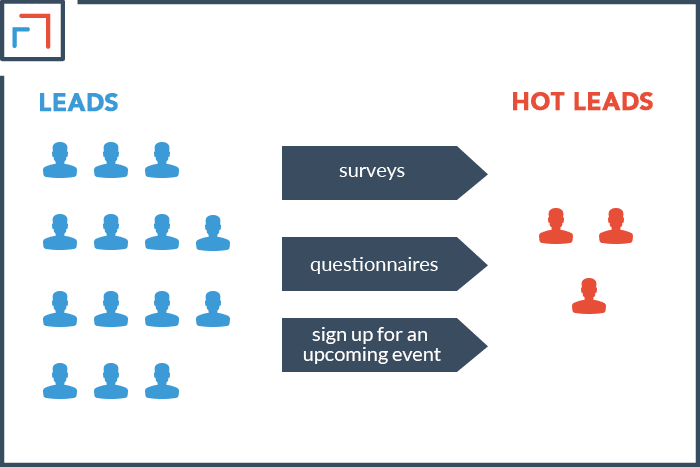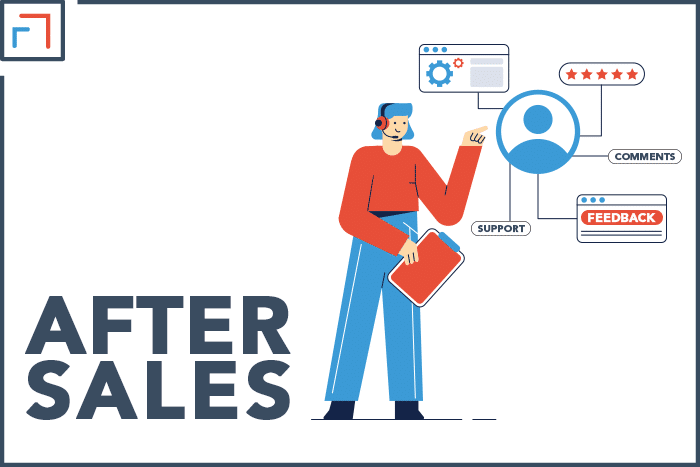All businesses, whether big or small, need to make sales to make a profit, or at the very least, survive. But to do that, they need a sales funnel that converts people into frequently buying customers. But, how do sales funnels work?
Sales funnels work by channeling complete strangers and existing customers through a series of steps called the customer journey. You need to put a product or service in front of many people to create awareness. Then generate leads from interested customers and sell your products and services.
I’ll explain the process in detail in the coming sections. For now, get this: a well-thought sales funnel could mean the difference between the inevitable doom for a business that depends on mere luck to sell and the success of the business that invests in a well-structured conversion process.
A Practical Example of Sales Funnels
If you think about it, sales funnels apply everywhere. Let’s take an example.
You own a general audio store. Hundreds of people walk down your street every week.
So, you decide to put out the word about your business and attract their attention with a huge billboard on the highway and a paid local tv commercial.
You now have 30 customers streaming into your store every day.
Half of these customers find their way to different sections in your store, while the rest take a few laps and leave.
You now have 15 potential customers asking for information about your products, including how the speakers work, warranty information, power consumption, and more.
Ten customers believe that your price is way too high, while three don’t find what they’re looking for and decide to leave.
You now have two customers ready to make a purchase. One buys a pair of RCA cables while the other buys a high def home theatre system.
He then proceeds to buy a complete wiring kit, a tool kit, and an amplifier.
Stages in a Sales Funnel in Our Practical Example
The process above is what we call the customer journey. Here are the steps on how it works:
- The store owner has a product (audio equipment).
- The owner markets the product and creates awareness by renting a billboard and a tv commercial.
- Generates leads (people who are generally interested in the product).
- The store owner provides useful information about the product to interested prospects (warm leads).
- The owner sells low-value products to one customer. If it turns out to be good, the first customer will come back and most likely buy something of more value.
- Sells a higher-value product to the second customer and adds other useful accessories.
Sales funnels also work in the digital world. Except that here, you don’t need a physical location for your business. You do, however, need a deliverable product or service.
But why do sales funnels work? Check out my in-depth guide exploring the reasons why sales funnels are so effective.

The 5-step Working Structure of Sales Funnels
When creating your sales funnel, you don’t want your customers buying just once and then leaving for good.
Instead, you want to keep them coming back again and again. Let’s take a look at a few ways to help you achieve this.
I have written a step-by-step guide on how to create a sales funnel from scratch to help you build one whenever you want.
1. Creating a Valuable Product or Service To Achieve Results
It doesn’t matter what kind of deliverables you offer. You can offer information products, physical products, financial products, or services.
My tutorial on building sales funnels for physical products will show you how to better capture leads and increase your conversion rate.
But if these don’t provide value, your customers have no reason to come back. Your product needs to deliver a result.
For example, if you sell an eBook that teaches how to become a better marketer, then it should, in some way, guide the reader towards better marketing.
There are thousands of eBooks out there, but VALUE separates them.
2. Having a Solid Marketing Strategy for Your Product’s Awareness
Now that you have something valuable for your customers, it’s time to put it in front of as many people as possible.
That’s where advertising, Facebook ads, Google ads, and guest blogging come in.
Do whatever you can to tell the world that “Hey people! I got this. Come check it out.”
Get a Website for Your Physical Store
Building an online presence with websites linked to your social media pages is a good start if you run a physical store.
Hire a professional developer to create a Google-friendly website and jump in on the global traffic.
Once you have your website, create your landing pages, blog posts, YouTube videos, How-to-guides, or courses for your products.
Run Google and Facebook Ads That Link to Your Landing Pages
There’s a lot of competition out there, and organic traffic might not be enough.
Google ads and Facebook ads are some of the most impactful ads worth investing in. If you’re new to all of this, perhaps it’s time to get an ads manager on board.
All this will come at an extra cost, but the results are worth it.
3. Deploying Your Lead Generation Strategy
Now that you’ve created awareness for your product or service, it’s time to turn those potential customers (prospects) into ready-to-buy customers.
Sort Your Leads Into Interested Leads and Very Interested (Hot) Leads
It’s possible that a majority of the people who got your adverts came to check out your business only because they heard about it and have no intention of buying.
You need to sort them out or else risk spending more time and money on their conversion.
Expert marketers use surveys and questionnaires to evaluate the actual intention of the customer. Do they really want to buy or not?
Ask your leads what they’re looking for. Ask them to sign up for an upcoming event. Collect their personal details like names and emails.
If they’re proactive in answering these questions, it’s an indication that they’re willing to buy.
Check out my article on ‘where can you collect emails for marketing?‘ to maximize your pool of leads.

Nurture Your Leads in Preparation for the Sale
You want to educate your leads on the problem they face and introduce your product as the solution.
In our previous example, the audio store owner can talk about the issues with stock amplifiers, for example, poor quality audio, power consumption, or other issues.
Then present the solution, which might include a high-quality amplifier with extra safety features, top performance, and excellent audio quality.
4. Selling Your Product
This is the most important step. Get it right, and you might just make more money than you anticipated.
Businesses use different strategies to sell the most amount of products. Some will use:
- Special one-time offers where they sell high-value products at a low price.
- Upselling
With upselling, you’re finding the next product your customer will need immediately after making a purchase.
For example, a customer who just bought an entire stereo for their car will also need wires and tools.
If you can provide these, then you’ve saved your customer a lot of time and struggle. If possible, install the stereo for them.
5. Providing After Sales Customer Service
You’ve sold your product successfully and, from the looks of it, made the customer happy. But they might not be truly happy until you ask them the following questions:
- Do they love your product?
- How can you improve it?
- Are they facing any challenges?
- Are they willing to visit again?
- Would they recommend your store to others?
That’s the whole point of after-sales customer service.
After-sales customer service refers to the support given to the customers after buying your products or services.
It involves follow-up calls, emails, and texts, asking the customer whether they loved what they purchased or if they’re having trouble with the product.
A customer who recently bought a subwoofer from you might not have the slightest idea about how to set it up against the corner or how to configure it to their tv set.
Asking these little things sets the business apart from the others. Customers can truly see that you care about them and not just about selling them more items.
After-sales customer service rewards the business with valuable insights on nurturing brand loyalty and winning the customer’s trust.
It’s a tool that, when well used, can yield higher returns from repeat customers in the long run.

Your Business Needs a Sales Funnel
Despite hearing about the wonders sales funnels can do, people still have reasonable doubts whether their business needs one.
“My business is different” or “Sales funnels might not benefit me” are some of the most common reasonings.
Here, check out my factual opinion on: Does every business need a sales funnel?
Sales funnels have existed for a long time and will continue to exist.
Your business needs one to clearly define who the buying customers are and focus on satisfying their needs.
To make your funnel creation journey easy, I recommend checking out HighLevel. It has a FREE 14-day trial plan which means you’ve got nothing to lose!
